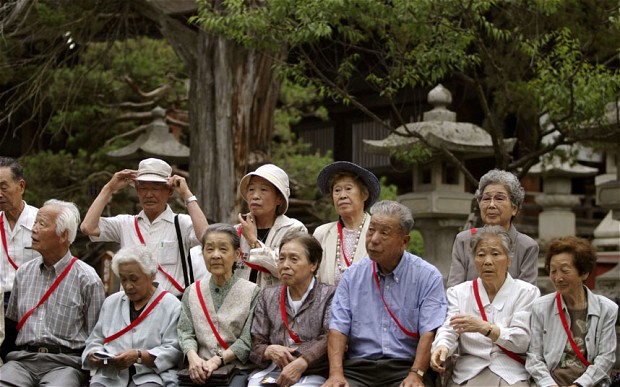Japan’s working-age population is facing a steep decline, new demographic research confirms, leaving the country’s future vitality precarious barring major improvements in social security and labor productivity.
The National Institute of Population and Social Security Research published new statistics on Japan’s population, showing projected levels for each of the 50 years from 2015 to 2065, Nikkei reported.
The working-age population, ages 15 to 64, is seen plunging 40% from 2015 levels by 2065.
As soon as 2040, the figure probably will drop to 59.78 million, undershooting the current count by more than 20%. It is currently declining by more than 500,000 people per year, meaning it will probably be below the 2015 count by three million people as early as 2020.
In fields such as construction, transportation and nursing care, open positions already outnumber applicants by more than three to one. Industries that require lots of labor may not be able to sustain themselves if the population keeps shrinking at this rate, and urgently need advances in productivity or technological innovation.
Nursing care has seen progress in information technology and robotics, but the labor force numbers probably will fail to keep pace with demand nonetheless as the population ages. Some logistics industry players have adjusted their strategies to address the labor squeeze, such as by discontinuing home delivery scheduling services. But unless package volume decreases, they will have a hard time maintaining their present level of service.
If Japan’s population declines at its current pace and productivity does not improve, the country could fall into negative economic growth starting in the 2040s, according to calculations by the cabinet office.
To keep real economic growth in the 1.5-2% range at that time, Japan would need to sustain a population of 100 million, and be on par with the world’s most productive nations.
Japan’s labor productivity, in terms of purchasing power parity, was $74,315 in 2015, according to the nonprofit Japan Productivity Center.
This was the least of any of the Group of Seven nations. To catch up with the top-ranked US, Japan would need to raise its productivity by a factor of 1.6. The sluggish service industry in particular would need help.
Few quick fixes present themselves, but the country needs to create an environment where women can work and support household income while raising children. Having more dual-income households should help boost the birth rate and produce more workers.


